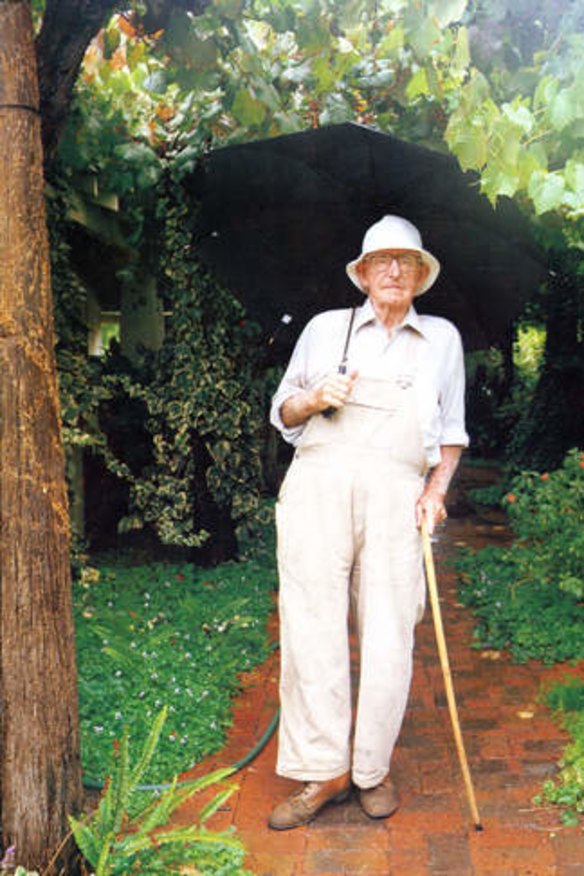Innovator created a little magic
A cabernet sauvignon series continues its tradition of honouring a great achiever.

Jack Mann was born just four days after his parents arrived in Western Australia from the Barossa Valley. For the rest of his life, the winemaker referred to it as his ''great escape''.
Escape from what? From the very heartland of the Australian wine industry, where his father and grandfather had both been winemakers? We can only wonder.
In light of his own achievements in wine, the innovations he thrived on creating to better his craft, the only answer can be yes.
Western Australia offered a blank canvas. There he could make a little magic.
Mann died in 1989, aged 83. His greatest little bit of magic for Houghton, the company he worked for from 1922 until his retirement in 1974, was the fabulously successful Houghton White Burgundy (now White Classic), a defining wine for both Mann and Western Australia.
He was a white-wine drinker by choice, partial to a chablis that he made for his own use. According to his son, Dorham, he hardly ever drank red wine.
So it is somewhat paradoxical that in 1994, when his long-time employer posthumously struck a wine in his honour, it chose a cabernet sauvignon blend, the now iconic Jack Mann Cabernet Sauvignon series. But as long as it was a red, no doubt Mann would have been pleased with the cabernet bit. ''The only grape allowed in heaven,'' he called the variety.
Mann wasn't formally trained. He learnt his craft from his father and never spent time in European vineyards, as some did. In fact, he seldom left the west. He tended to drink his own wines and rarely touched those sourced from outside Australia.
His pet hate in wine was the appearance of volatile acidity, instantly putting him at odds with one of his great rivals on the wine show circuit, Max Schubert at Penfolds.
Yet he was an innovative and free-thinking winemaker. ''You should always be prepared to depart from the orthodox,'' he said, and he did.
His preferred winemaking tool was a meat mincer. He employed it for all his red wines and fortifieds, winning the Australian Champion Wine award for his oloroso 13 years in succession.
Using open-top fermenters, Mann would load in the red grapes. As fermentation began, the skins would rise to the top, prompting him to run the juice off at the bottom into an adjoining tank.
Next came the mincer, on a platform that straddled both tanks. A cellar hand would jump into the tank with the skins and hand buckets of the goo up to an assistant, who would tip them into the mincer.
The blades would spin and split the grape skins but, importantly, not the seeds, where harsh tannins dwell, and the resulting red fluid would flow into the fermenter of juice below.
''He did it for colour,'' says Dorham, also a winemaker, who was sometimes the unfortunate cellar rat tasked with the bucketing. ''It was quite a bit of extra work.''
What we taste in the Houghton Jack Mann cabernet blends from 1994 to today are the imaginings and interpretations of winemakers who probably never knew the wine's namesake.
The cabernet sauvignon, grown from Houghton clones, comes largely from a vineyard planted in 1999 at Mount Barker, in the south-west of the state.
In the latest Jack Mann vintage release, from 2011, Ross Pamment, a quiet, consistent winemaker who generally likes to work by the book, has embraced a little innovation of his own.
''From 2011, we have wild fermentation (natural rather than cultured yeasts) on the Jack Mann,'' he notes. ''It's for texture.''
He has also eschewed the Australian winemakers' habit, almost second nature, of adding acid to add balance and cut in a sea of ripe fruit.
''As a technical winemaker,'' he says, ''my first instinct is to change it [acid], but, having left things alone for three years, it's better.''
The 2011 includes 3 per cent malbec and a 1 per cent splash of shiraz, also for texture, a highly desirable attribute in 21st-century Australian wines.
Jack Mann 2011, in fact, checks all the current red winemaking requirements, including approachability.
It is not Jack's wine or particularly innovative, but it is a respectable, drinkable West Australian wine and Jack would have been pretty happy about that.